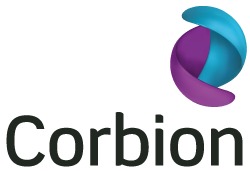
| Sign up for our free newsletters From breaking news to R&D insights, we’ll send you the top stories affecting the industry. |
Subscribe |


Every year nearly 80 billion pounds of food are wasted in the U.S. (1). That’s somewhere between 30 and 40 percent of the entire American food supply (2). Homes and restaurants are responsible for nearly half of that waste, though grocery stores and food service companies are a close second.(3)
While manufacturing sites themselves are responsible for only two percent of the nation’s total food waste, even that number translates to nearly 1.6 billion pounds of food wasted annually. (3)

That’s a bad thing for the people who could use that food, it’s a bad thing for the environment, and it’s a bad thing for manufacturers who lose economically — in wasted ingredients, in lost production, in elevated waste disposal costs, and in lost worker productivity and wages. With the growing awareness of the waste crisis, it’s no wonder waste reduction has increased in importance from an efficiency measure to a strategic imperative.
Sources of Bakery Waste
In every bakery, there are multiple sources of potential waste, some of which are harder to control than others. New product development, for example, demands a certain amount of waste, particularly when trying out new formulas and optimizing processes.
Other sources of waste, however, are easier to control. The waste that arises from human error, for example, is the single largest cause of food waste at the manufacturing level.
When operating procedures are not followed correctly—whether due to machinery being set improperly or incorrect ingredients being added in the wrong proportions—it can result in the loss of entire production runs. This not only wastes valuable time but also incurs costs that can never be recovered.
Of course, the production site isn’t the only place baked goods are wasted. Roughly 30 percent of food that arrives in American grocery stores is ultimately thrown away (4).

For the most part, bakery waste at the retail level occurs either when a product stales or is compressed, either in transit or during shelf stocking.
While it's true that manufacturers have limited control over waste once a product leaves the production site, bakeries can implement several effective strategies to minimize losses, just as they do with on-site waste.
Reducing Waste Through Ingredient Innovation
Optimizing formulations is one effective strategy to minimize waste. A dough improver or freshness extender, for example, does more than create a soft, well-aerated product that appeals to the consumer. Fresher, springier bread and buns are more resilient in the face of smashing and jostling, as even mild staling can create a firmer, stiffer crumb that’s more likely to pack down or crumble under pressure.
The Next Frontier of Consumer Satisfaction
What’s missing from this calculus is the rising importance of waste reduction and sustainability to the consumer. Millennials and Gen Z don’t just expect great products these days. They want products that have been produced via methods that are good for other humans and for the Earth. Sustainability, in other words, is becoming a larger and larger piece of the consumer value equation.
The companies that are first to figure out how to deliver the sustainability consumers want along with the freshness and quality they expect will be the ones to succeed in the new, more environmentally aware marketplace.
You’re not in this alone
What can/should a bakery expect from its suppliers in the way of help/tools/ resources? Talk to your suppliers and let them know about your needs and goals. Corbion can help. For over a decade, Corbion has been partnering with the world’s food manufacturers to create innovative, cost-effective, and sustainable food solutions. Our state-of-the-art ingredient technologies enable forward-thinking companies to deliver top-quality eating experiences that also protect the planet for future generations. We deliver both tangible and intangible value and help our customers craft delicious, nourishing foods consumers can trust.
Case Study in Brief: Reducing Waste Through Formulation & Process Simplification
A large bakery manufacturer in the Northeastern US had been dealing with a variety of production quality issues. As a result of a combination of ingredient and labor shortages, they had difficulty producing bread and buns consistently. Distributors began to complain about both quality and lead times.
Corbion responded with a reformulation plan based on the multi-functional Pristine® 3000 dough strengthening system. The substitution allowed the bakery to reduce the number of ingredients in their bread formula, which lessened their dependence on suppliers, brought new levels of consistency to their processes, and reduced costs and waste by simplifying the ingredients.
In a single stroke, the bakery was able to streamline operations across its bakeries (the company maintains several large production sites), reduce costs, improve quality and mitigate the impact of ingredient price fluctuations. Production errors were greatly reduced as operational complexity decreased and employees made fewer mistakes. As a result, total bakery waste decreased dramatically.
1 U.S. Environmental Protection Agency
2 U.S. Department of Agriculture Economic Research Service
3 Feeding America
4 U.S. Department of Agriculture
| Sign up for our free newsletters From breaking news to R&D insights, we’ll send you the top stories affecting the industry. |
Subscribe |





Check out highlights from SupplySide West held Oct. 28 - 31 in Las Vegas.

Five manufacturers and suppliers were issued patents.